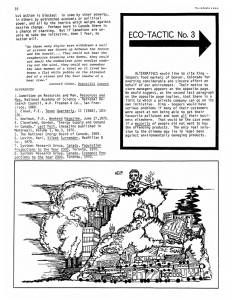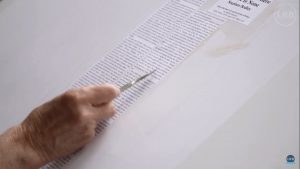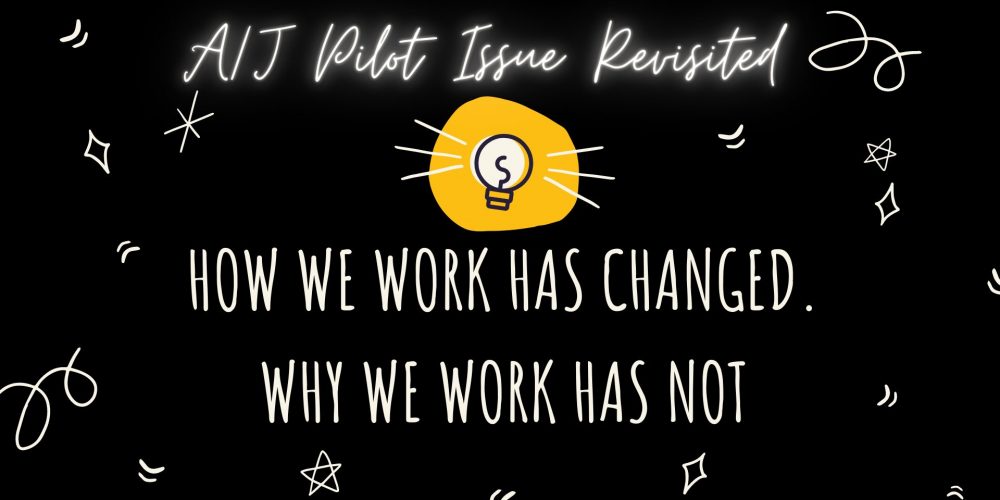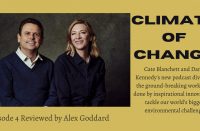I got my start in publishing in the early 1990s, although I did have some tangential exposure to the back-end of the industry during my brief stint as a child model. When I was doing that modeling work, for the wide-eyed younger version of me, everything seemed so big, so professional, so structured in terms of how the work should be done. And that makes sense. Publishing in the 1960s and 1970s was the industry at its zenith, a well-oiled machine of how-to and know-how, that had been perfecting its craft since the 1800s. I did a cover shoot for an Eaton’s catalog, and the set was the actual oak-paneled boardroom of the Eaton’s empire. Every piece of furniture was large and imposing. The suits that I wore were dark blue, three-piece numbers befitting the usual denizens of the inner den of the Eaton’s clan. The cameras were giant, the lighting seemed like Krieg lights, and the directors and assistant directors ordered us to and fro like the gods of Hollywood that they all aspired to be.

By the time I started working in publishing as an adult, the industry was at an inflection point; in both the technology that drove the work and the relative importance of the medium in comparison with the burgeoning television industry. What once required a room full of typesetters, layout artists, and hand-cut editing – along with full-size negatives that would be ‘dropped in at the last moment – had been replaced by a desktop computer. Granted they ran $5000 each back in the day while possessing the computing capacity of today’s average smartphone. The on-site photoshoots had been replaced by the first iteration of digitized imagery, and anything that wasn’t tangible could soon be replicated digitally with the release of Photoshop 1.0. The back-end of the publishing process – the printing – was also adapting at this time, reducing the costs and speeding the process.
And that’s the point to keep in mind: the process was being streamlined because the earlier generation of profits-for-all had become curtailed as revenues shifted from print to visual (television). The philosophy of ‘’do more with less” was the mandate from the magazine’s financial officer and, if that advice wasn’t heeded, ‘efficiencies’ could be found, starting with your job! Like many great industry-based technological great leaps, the changes in the publishing industry, many of which are still present as challenges today, were conceived initially in times of plenty – then put on the shelf until the times of ‘less’ came upon us. And those “times of less” started to bite into the profitability of every publishing entity and especially for magazine publications like A\J that were (and still are) non-traditional, niche content serving a small but committed audience both of readers and a less defined audience of potential advertisers.
Don’t get me wrong: the revolution that is digital publishing truly opened the door for knowledge mobilization on a grand scale.
And well before the internet created the conditions of ‘information for all, small, niche publishers in the 1990s began addressing topics and subjects that held appeal to them but might not have caught the attention of any of the existing (and conservative) publishers. Think ADBUSTERS – and the zeitgeist that underpinned its creation (capitalistic cannibalism is bad for us!) – with its pages packed with satire and parody ads of the largest corporate culprits. Which provided the home for the like-minded that helped to inspire the original ‘OCCUPY WALL STREET’ movement.

At A\J, we got with the program…eventually. We started including color, images, and more expansive illustrations in the magazine in the 1990s and really started to kick it up as we rolled into the aughts. Oh sure, we might have looked a bit different as we redesigned the magazine’s visual face (primarily cover) from time to time as the 1990s rolled forward, but the core work that we delivered – demystifying the academically dense study area of environmental science – continued unabated.
As we come into the 2010s, many things in our world and how we do our work changed….again. The explosion of digital media – online news sites and social media feeds – challenged us to our very core, and in many ways the HOW forced us to look at the WHY. And it couldn’t have come at a better time.
We, the organization, had been ensconced in academia since our founding in 1971. We were very good at speaking to those ‘inside the deep green tent’, the people with the same training as our editors and writers (professors and grad students). And while that was still important, it was less critical than helping to mobilize that knowledge to build allies with those who might be of a lighter-green persuasion. We needed to understand how to support the corporate community as they dipped their toes in the sustainability waters. We needed to know how to continue to share stories from the environmental community and the academic community, but to reach more and more eyeballs, and especially those younger readers frustrated with the slow pace of vitally-needed change.
A quarterly or bi-monthly publication works at its own pace, has its own culture, and tells stories in its own way. And yet, there was this huge need to serve content on a more frequent basis, to share lighter-green stories that could resonate with the average reader – and maybe even inspire them to take their first eco-steps. But what is a website? Is it the past content? The future? How does it get supported? And how do you promote it?
These were all vital questions and team A\J has spent many of the intervening years reflecting, reshaping, and, hopefully, improving our holistic abilities to publish environmental media stories in the manner (and via the medium) most appropriate for achieving the outcome.
That is moving the needle of public environmental literacy.
All the while trying to understand how to sustain a print magazine in a time when the ‘print is dead’ echoes continue to wash over our industry. The IN MEMORIAM (PUBLICATIONS) segment of our industry’s OSCARS keeps expanding.
And yet, despite all this change, the core reason why we do our work remains the same:
- To support environmental education, in all its flowerings;
- To support environmental journalism and to help provide a training ground for the next generation of environmental journalists;
- And, in doing so, to provide the critically-needed media/communications canvas for the Canadian environmental community to share stories that capture attention, create interest, motivate desire and spark action.
That’s never changed. When Bob Paehlke stayed up late nights in the 1970s, these were the guiding missions that helped him to sustain his work. And they keep me up at night too.
We’re 50 years old this year and theoretically, we should be readying for our happy retirement, knowing that our work is done and there’s no more left to be written. But that isn’t the case. We have all the science, data, and existing solutions (upon which improved versions will emanate) that we need to make the quick and relatively painless leap to a zero-carbon world. But between the distractions of living (which isn’t getting easier for many), the distractions that are foisted upon us to keep us from living, and the vested interests holding us back, the FACTS don’t seem to be followed by urgent and meaningful ACTION.
So we persevere. And we strive to stay true to our founding missions, even though every other aspect of our work has changed since 1971, some for the worst but mostly for the better. After all, it may have taken us 50 years to make the case for environmentalism to the taste of public appetite and industry interest suggests that the vaunted ‘big, green tipping point’ is just around the corner, probably prodded along (with a taser) by the worsening impacts of the climate crisis (before we get on the right side of it). In many ways, you could say that “we’re an overnight success….50 years in the making!”
So read on… and shine on you crazy diamonds!












